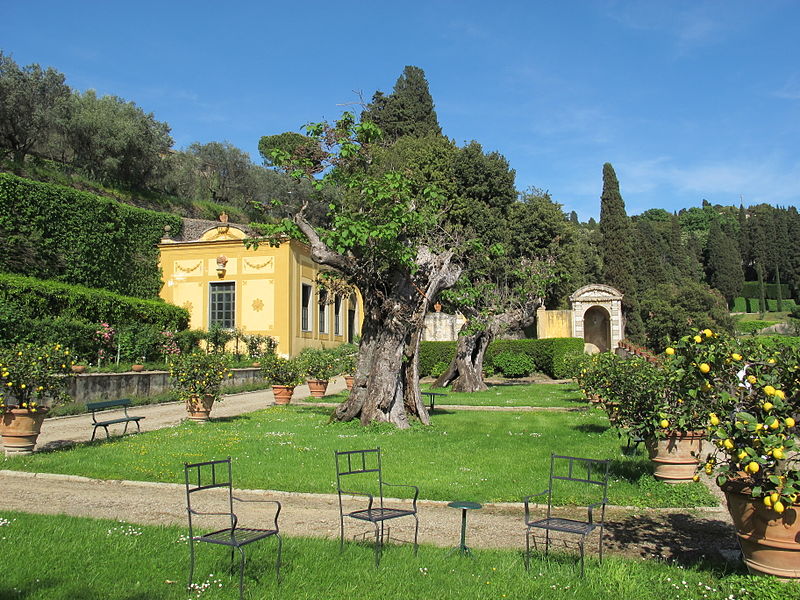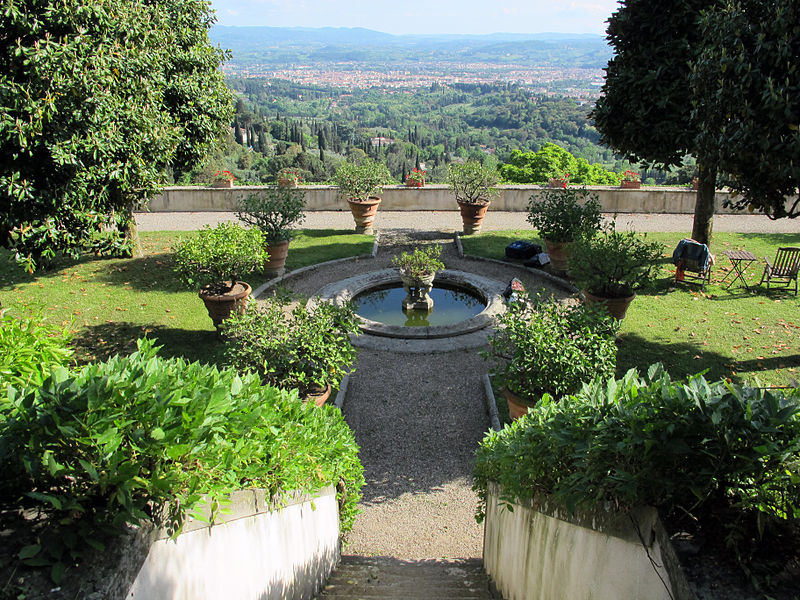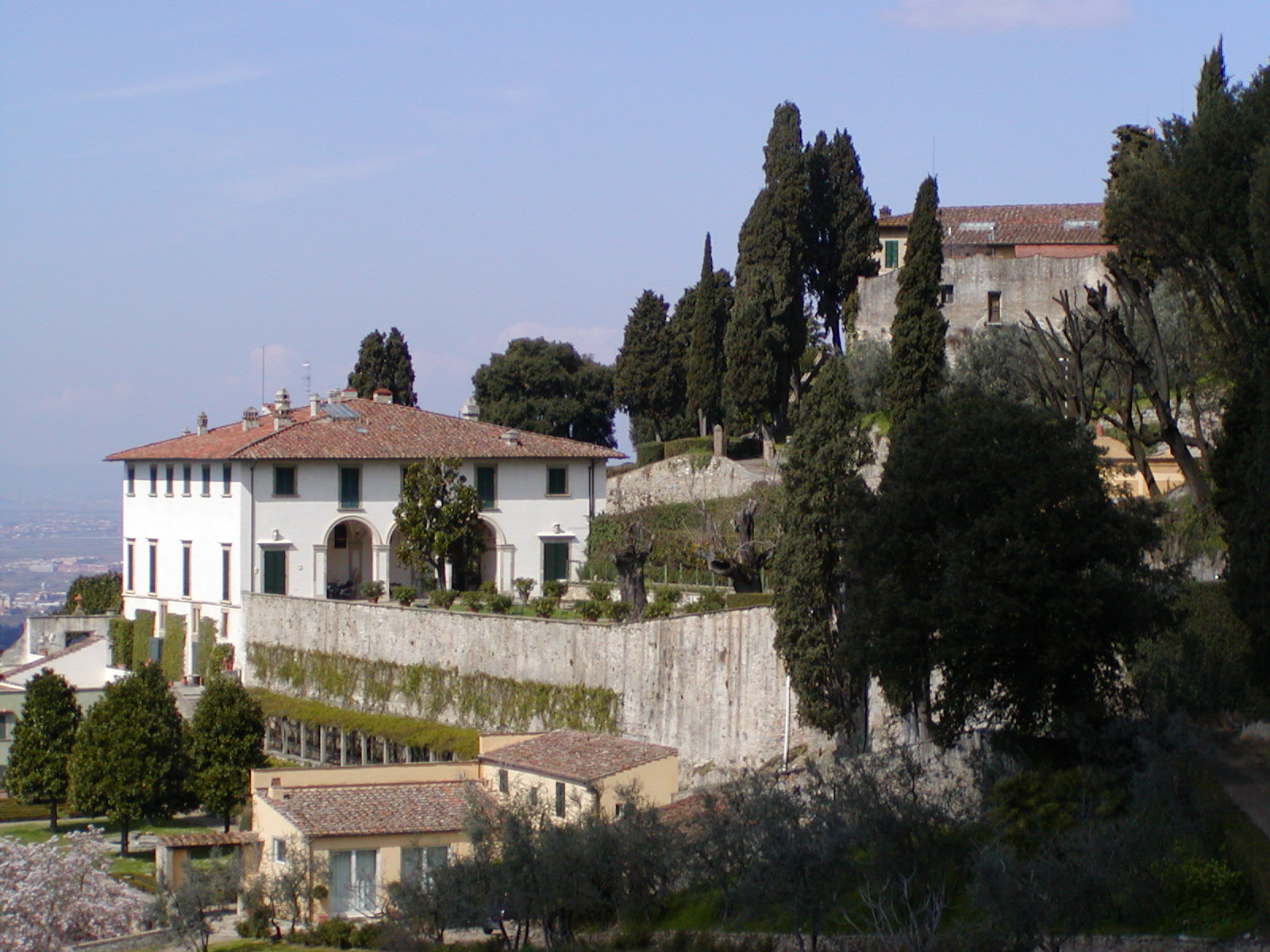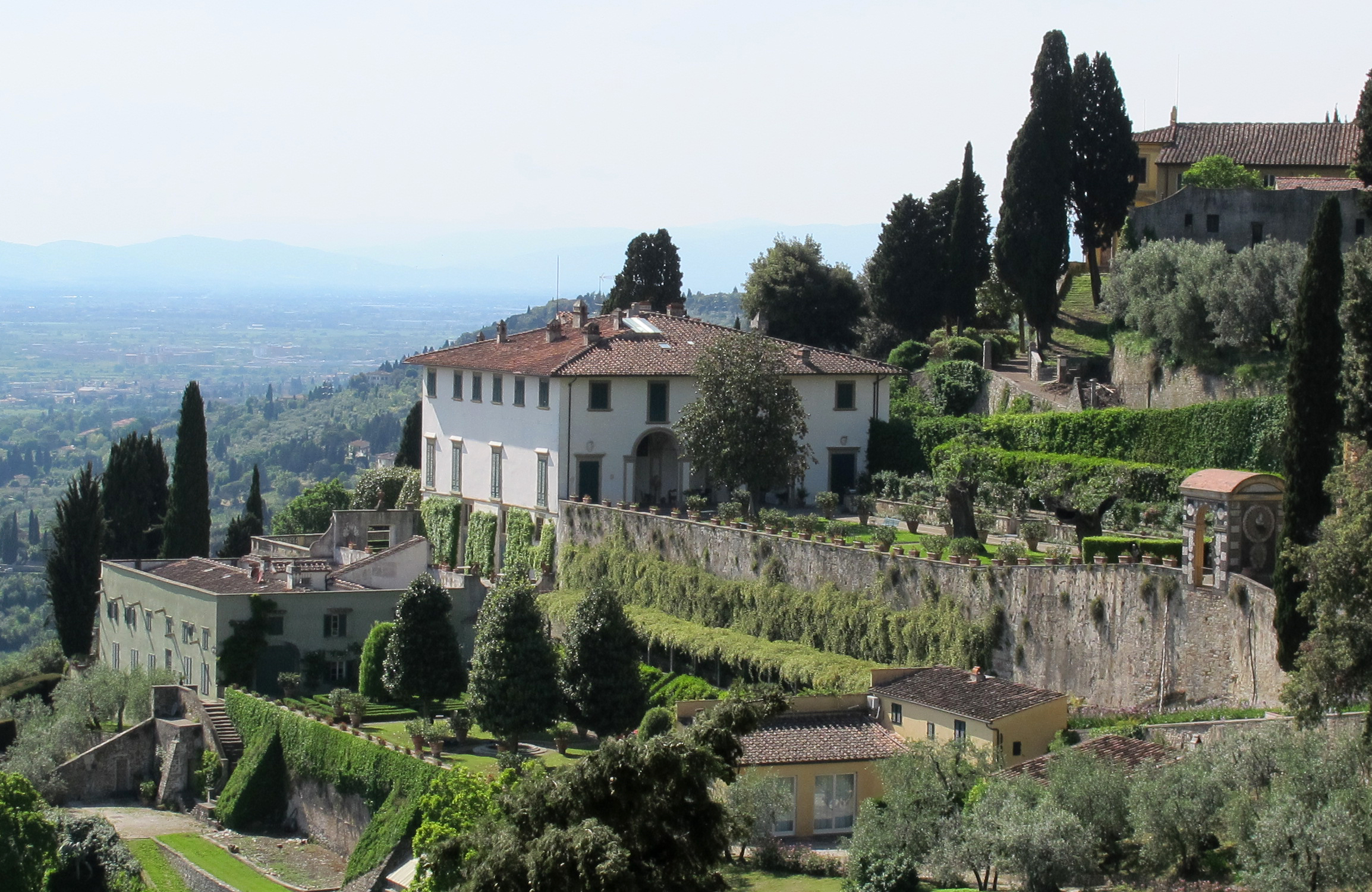
Villa Medici
This post is also available in:
 Italiano (Italian)
Italiano (Italian)
Villa Medici was erected in a panoramic position on a very steep slope in Fiesole. The building was built between 1451 and 1457 on a project by the Renaissance architect Michelozzo – commissioned by the son of Cosimo the Elder.
Thanks to the Medici family, the villa enjoyed a period of great fame until the XV century but the following generations of that noble family couldn’t do any better.
In 1600, it was renovated by the new owner, Vincenzo del Sera, who increased the size of the villa on the western side. Other owners were the Borgherinis (from 1722 to 1768), who sold it in 1771 to the Albergottis. All those changes of ownership made it imperative to draw up cadastral estimates, with valuable descriptions of the villa and gardens.
Villa Medici was later purchased by Lady Margaret Orford (Horace Walpole’s sister-in-law) in 1772: she asked the architect Niccolà Gaspero Paoletti to expand the upper garden and build a lemon grove. The access avenue was also created, thus switching the very roles of the two facades – the one facing East thus became the main one.
Between the XIX and XX centuries, the Villa lived its “Anglo-American” period, with different owners such as the artist William Blundell Spence (from 1862 to 1897), then Lady Sybil Cutting (widow of William Bayard Cutting and mother of the future writer Iris Origo). In 1959, the villa was bought by the Mazzini Marchi family – the current owners.
THE VILLA
The villa is a sober building with a quadrangular plan, plastered in white, with stone framed windows and with large loggias opening on the panorama on both sides of the central hall on the main floor; they replaced the defensive-military component of the structure.
The formal and functional innovations of this noble abode, such as the open loggias, replaced the original value and typical display of military power which can be still found in many of the oldest properties of the Medici family. The appearance of this villa is thus very different and in some ways, it can be considered a prototype of an early Renaissance project, with prominent geometry and without a central courtyard.
At some point, it was necessary to build a large terrace to support the building and the garden on the hillside. The very structure ingeniously solved the problem of the slope, thanks to a distribution of the rooms on several levels: the lower ones used as cellars, stables, wine cellars and other beautiful areas covered by vaults; the upper floor, on the other hand, was intended for the residence of the lords, with elegant rooms, halls, the library and even a space dedicated to music.
THE GARDEN
The garden still retains, above all, the 1911-1923 renovations made by architect Cecil Pinset.
It is spread over three terraces at different levels. The first, which is accessed from the cypress avenue and flanked by a grove of holm oaks (Quercus ilex), is made of large rectangular grassy beds, with large old trees in the centre and lemon specimens (Citrus x limon).
The second is the least modified area of the garden, with large magnolias (Magnolia grandiflora) and decorated with flowerbeds surrounded by box hedges (Buxux sempervirens), with a fountain in the centre.
The third terrace is contiguous to the first, but 36-39 ft meters lower longitudinally.
It was created during the Pinset renovation. Wisteria (Wisteria sinensis) decorates the handrail of the access ladder, aligned with a circular fountain.
An upper level of the XIX century shows a row of cypresses ending in a large stone urn.
The garden of the villa is very rich in water and is constantly exposed to the sun: this offers an almost unique microclimate to the whole area.
This post is also available in:
 Italiano (Italian)
Italiano (Italian)
Contatti
Via Beato Angelico 2 - Firenze(FI)
http://www.villamedicifiesole.it
Altre info
Tutto l'anno da lunedì a venerdì
Dalle 9.00 alle 13.00








